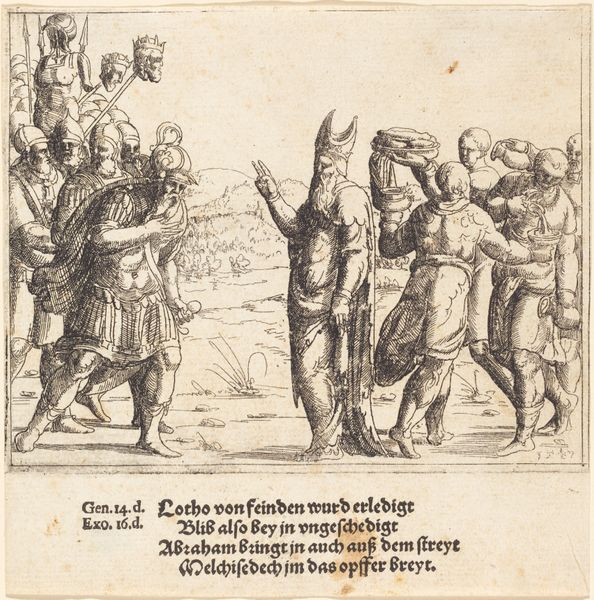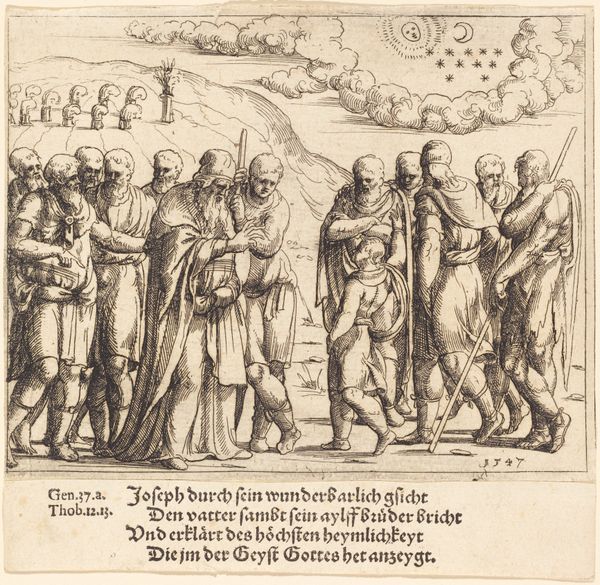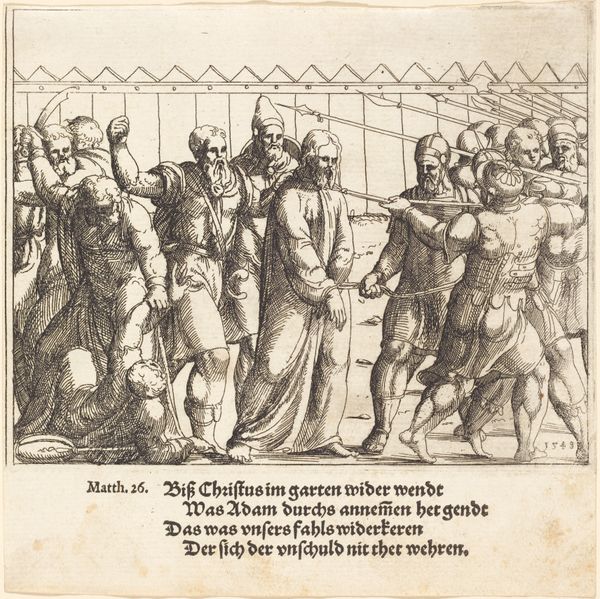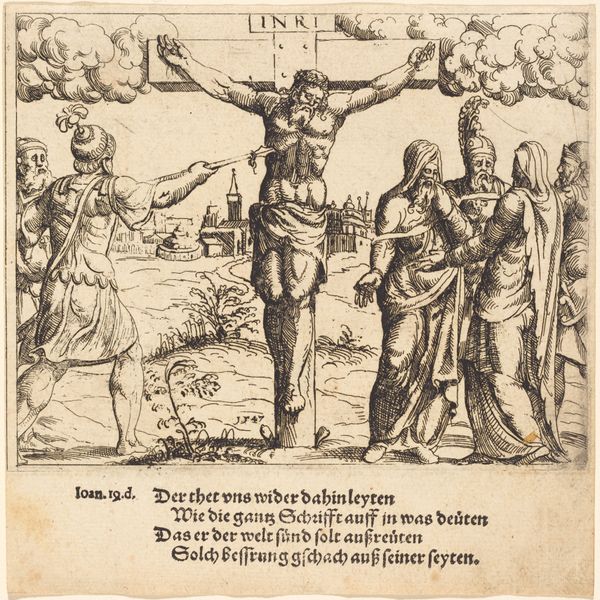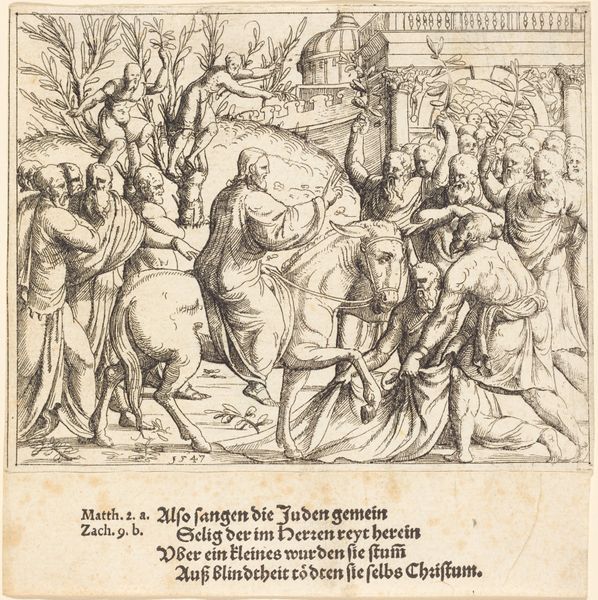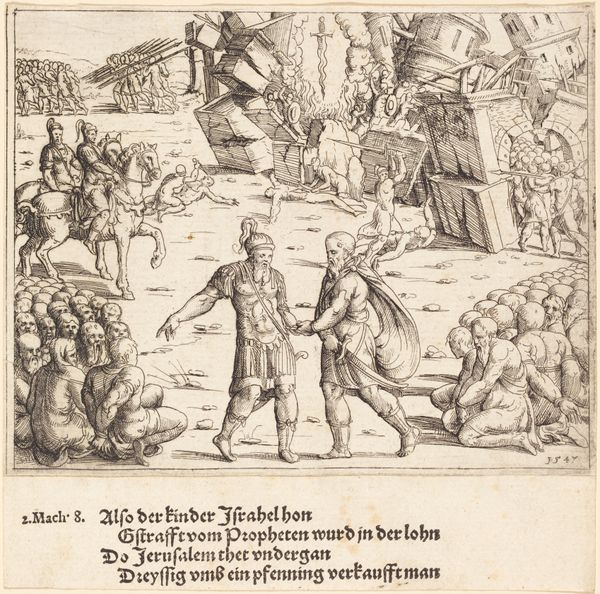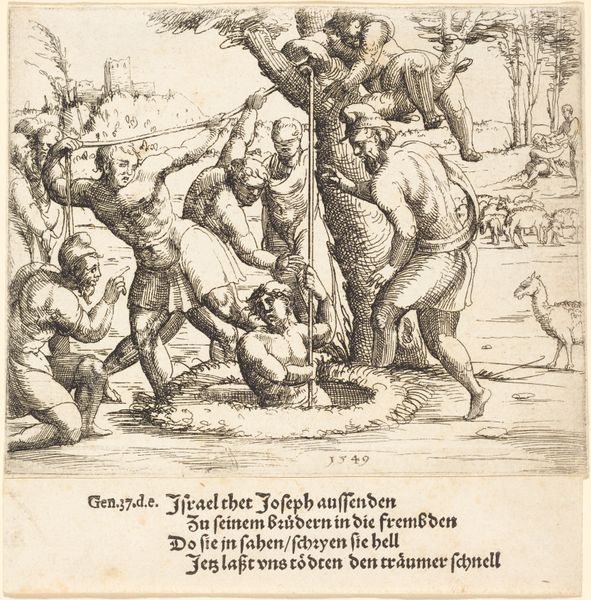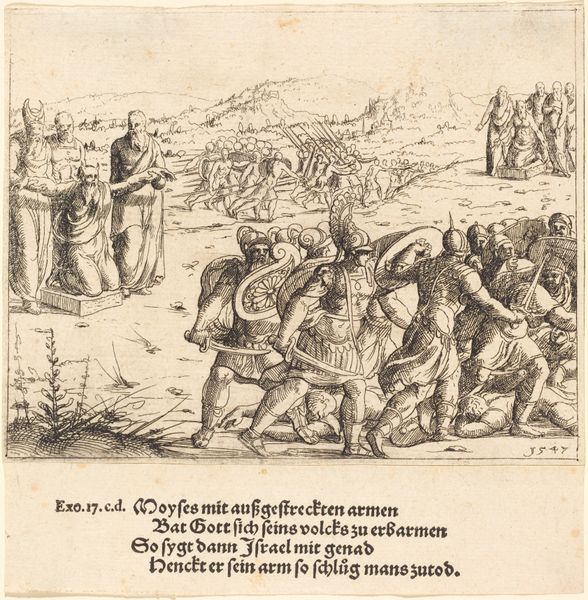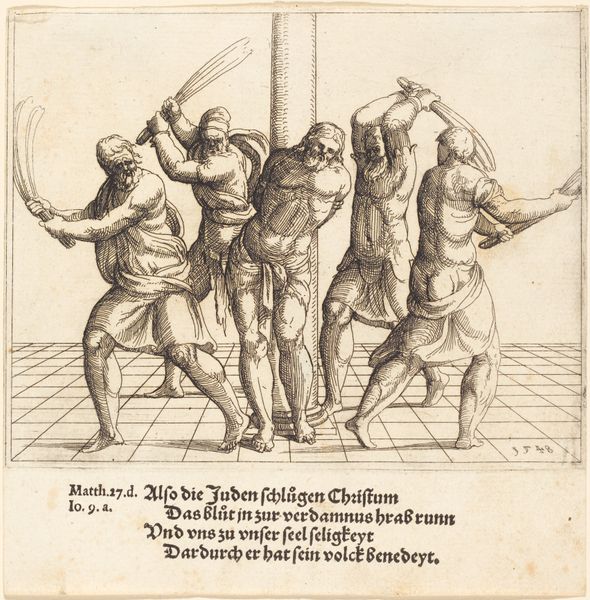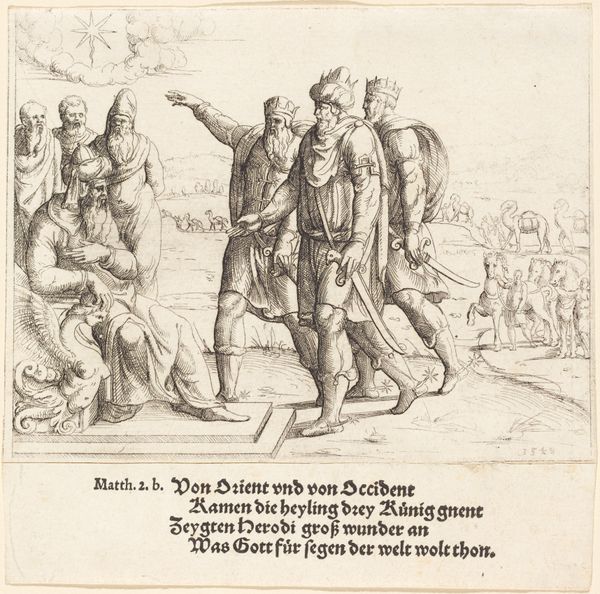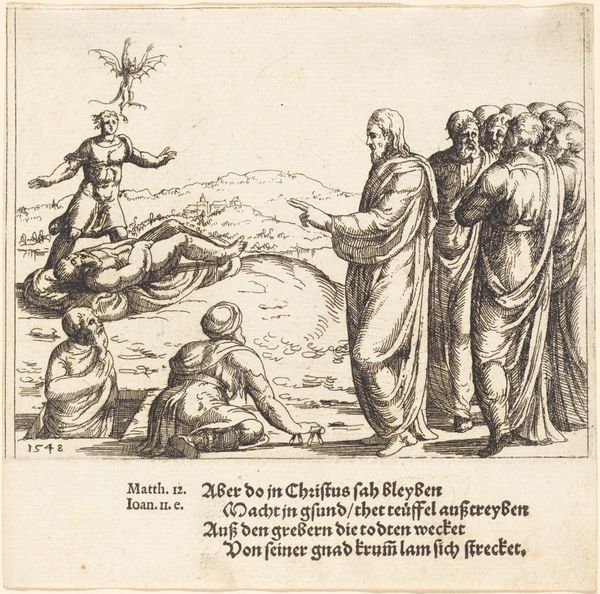
Copyright: National Gallery of Art: CC0 1.0
Curator: Right, let’s have a look at Augustin Hirschvogel's engraving from 1547, "Christ Carrying the Cross." What strikes you about it first? Editor: It’s overwhelmingly somber, isn't it? The density of figures, the etched lines digging deep like scars… a weightiness beyond just the visual depiction of the cross itself. Curator: Precisely! Hirschvogel's choice of engraving heightens that emotional impact. It allows for these incredibly detailed, almost claustrophobic scenes. And consider how the image pulses with the visual weight of cultural memory around the event. Editor: The Roman soldiers on horseback, the weeping women, Christ almost buckling beneath the wood… each a symbol laden with centuries of interpretation. Look at the path winding up to Golgotha; it almost resembles a serpent. Is it symbolic? Curator: It certainly could be! Hirschvogel was working within a deeply symbolic tradition, where every element could carry multiple layers of meaning. I'm particularly interested in how he depicted Christ's face. It is serene. Defiant. Editor: Almost ethereal amid the brutality. And beyond the immediate story, the image embodies timeless themes—oppression, sacrifice, injustice. Curator: He certainly tapped into some deep archetypes there. Perhaps it speaks to humanity's perpetual struggle with power and powerlessness? I wonder what viewers at the time would have made of this intensity. Editor: Probably the same sense of profound disquiet it evokes today. This work doesn't simply tell a story, it viscerally invites us to consider what it says about ourselves. Curator: Indeed, it’s an interesting and uncomfortable work that pulls us into the heart of a powerful story and makes you feel empathy. Editor: A lasting testament, rendered with meticulous anguish and detail. It leaves me considering just how much weight visual symbols have to shoulder.
Comments
No comments
Be the first to comment and join the conversation on the ultimate creative platform.

